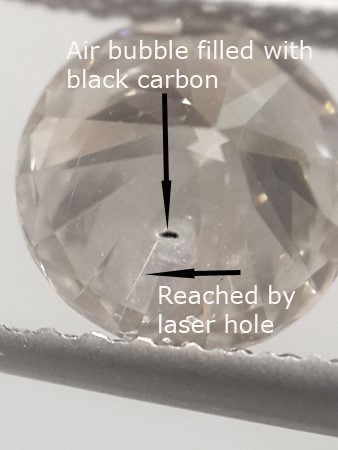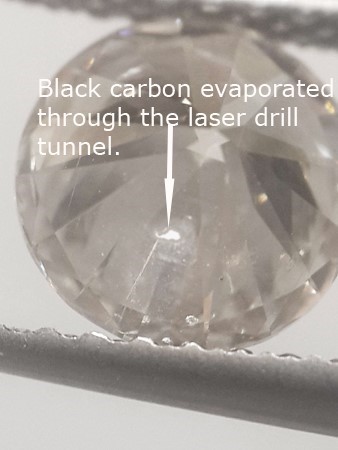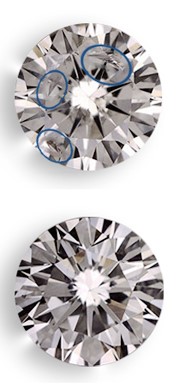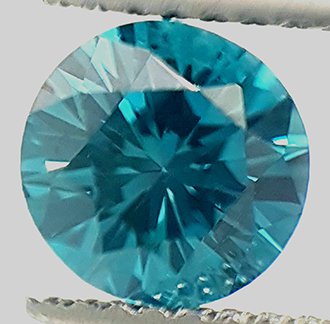An Overview on Diamond Enhancement and Its Many Methods
Diamond enhancement is a procedure that is performed to dial up the aesthetics of a stone. Performed only on natural diamonds, the treatment works only on cut and polished gems. Diamond enhancement is not one treatment, but an assembly of procedures each of which is a different method applied to achieve one end, improvement of the cosmetic characteristics of a diamond. Diamond enhancement procedures works to improve the aesthetics of a stone in multiple ways. There are clarity treatments, color enrichments and a multitude of similar procedures each of which attempt to dial up a specific characteristic of the stone.
Let’s begin the discourse by giving you a general idea about the different kinds of enhancement procedures that are out there.
Types of Enhancements
The two principle kinds of enhancement treatments that are known to us are color and clarity enhancements, each of which addresses a relevant characteristic of the stone and attempt to improve it by perceivable degrees.
Clarity Enhancement:
Clarity, or what we often call the purity of a gemstone is a gemological feature that refers to internal presence of inclusions, or their absence thereof. One of the 4 Cs of a diamond, clarity is a critical aspect of evaluation of diamonds. Most diamond bear natural spots inside them, which are caused by the presence of carbon at its carbon. Other than spots, cracks are another kind of inclusion. Professionals who handle diamonds call these fractures feathers, a name that is coined from their feather-like whitish appearance. Other kinds of inclusions that can compromise the clarity of a diamond are mineral traces and bubbles. What affects the clarity of a stone is the color, size and even the position of these inclusions. Clarity enhancement aims at reducing the visibility of the fracture and fracture filled with carbon inclusions, thereby rendering the stone cleaner and clearer.
Color Enhancement:
A diamond needs color enhancement when its natural color is not rich enough to catch the attention of the buyers. Sometimes natural colored diamonds are either too faint or murky, neither of which can be passed off as a value-adding quality. So to dial up the cosmetics of some stones, they are made to pass through color treatments. Color treatments are purposed to achieve two things, modify or enhance. Some treatments change the colors from light brown to colorless while others enrich the colors of yellow up to Fancy Vivid yellow or change it to fancy green or blue.
Clarity Enhancement Processes
Clarity of a diamond is enhanced in two ways, namely, laser drilling and fracture filling.
Laser Drilling:
The first technique that is also the most popular one uses laser beams for selective targeting of inclusions. In this process, inclusions are detected, targeted and removed. However, for imperfects bigger than microscopic dots, this procedure helps to reduce their visibility. The process of laser drilling dates to as early as 1960s when it was employed for the removal of hematite inclusion in gems.
To get to the technicalities of the process, enhancers use infrared laser beams about the wavelength of 1064nm, which is bona fide surgical grade, to make fine incisions into the stone to create an access path to the spot. Through a hole which is not larger than 0.0005 inches, the laser beam draws out the carbon crystals. To be more accurate, the carbon specs are not so much drawn out as soaked out. Once the hole is bored, the diamond is soaked in sulfuric acid which breaks down the impure crystals leaving the site squeaky clean. A carbon filled inclusion turn into a white one.


However, the procedure for its effectiveness does not propose a way to fill up the tubes drilled into the gem. Because they are microscopic, they do not make visible distractions. If you are worried about dirt accumulation, the channels are too small even for dust pollens to travel through. So, measured against other techniques, the laser drilling is the most successful and often used method of clarity enhancement. This process cannot be reversed
Fracture Filling: Fracture filling is a treatment clarity enhancement has in common with color improvement. A process which came to us roughly two decades after the discovery of laser drilling, fracture filling is ever effective in its designs and outcomes. By this process, gem experts target inclusions like fractures as the name suggests, fills these cracks up so that they become less obvious to the eyes. With the use of solutions which are specially formulated to have nearly similar refracting index as a diamond, these fissures are closed up and subsequently removed from the range of visibility. They become invisible. Both to untrained eyes and under magnification, a diamond that has undergone fracture filling appears far less imperfect than it really is. By treating fractures, a diamond can be given a major aesthetic upgrade which subsequently raises its value in the market. However, unlike other process, fracture filling is usually the final touch up step in the whole diamond enhancing exercise.

Before and after fracture filling
Visit our Clarity Enhanced diamonds page
Color Treatments Gem enhancement experts rely on three de facto methods to enhance the color of a diamond. These process are as discussed below.
Irradiation: Color alteration or enhancement through radium is a process first discovered by Sir William Crookes who was a chemist, physicist and a gem enthusiast. He found out through a series of tests that diamonds when dusted with radium salt changes color. In his experiments, the diamonds turned dark green, a color which appeared around the surface never really penetrating it and in localized blotches. However, the exposure left the diamond radioactive, and thereby unwearable. His discovery laid foundation for a much sophisticated technique. Currently, irradiation of diamonds is carried out through bombardments of protons and deuterons, gamma rays, just neutrons and just electrons.

2.37 carat natural diamond irradiated to Fancy vivid Yellow

0.86 carat natural diamond irradiated to blue color
Visit our Fancy colored diamond page, enhanced and naturalCoatings: The second method is coating wherein experts cover the gems with colored surface coatings like vacuum-shinned films, violet-blue dyes, etc., a process not very different from coating camera lenses. Diamonds-USA.com does not use coating methods.
HPHT: The last technique of color correction is high-pressure and temperature procedure. Through this process, the color of a diamond can be lightened or even removed. For some stones, it can darken the saturation of the existing color of a stone by exposing it to high temperature and pressure. Diamonds-USA.com does not use HPHT methods.
![Black Friday Sale]()




 ​
​